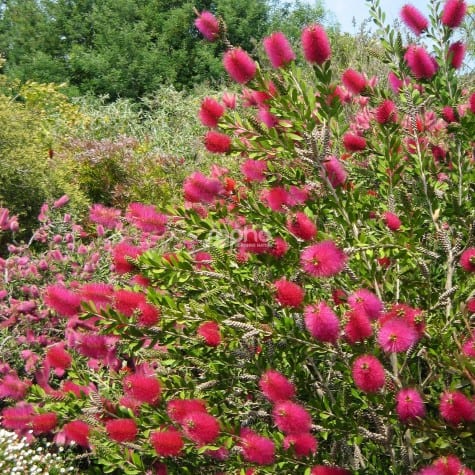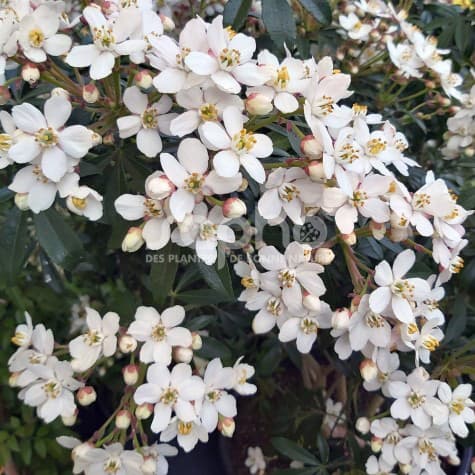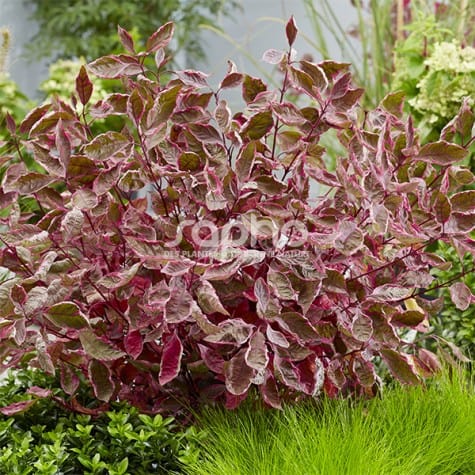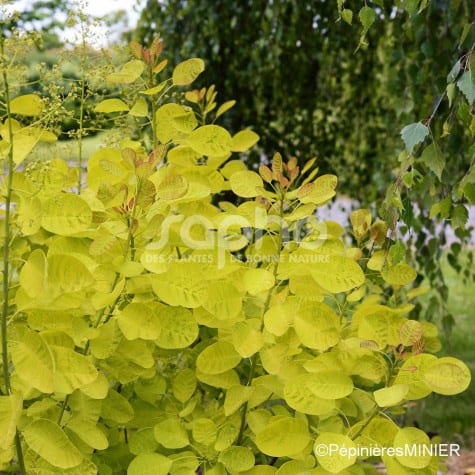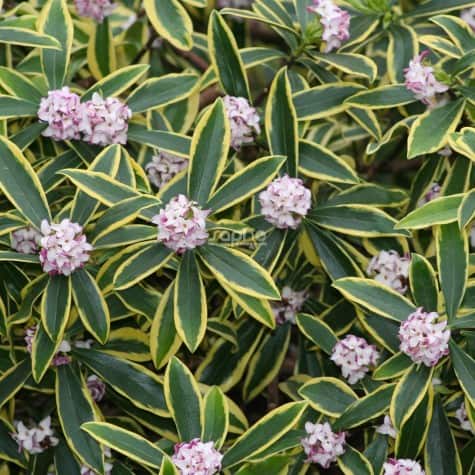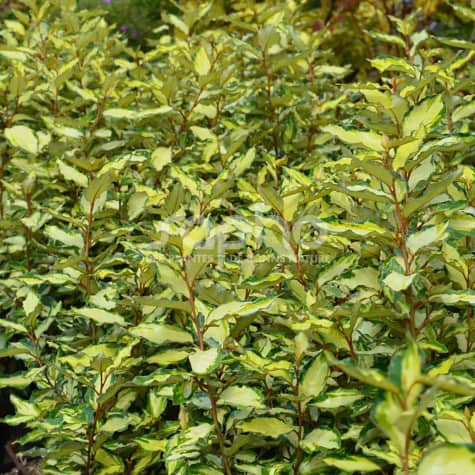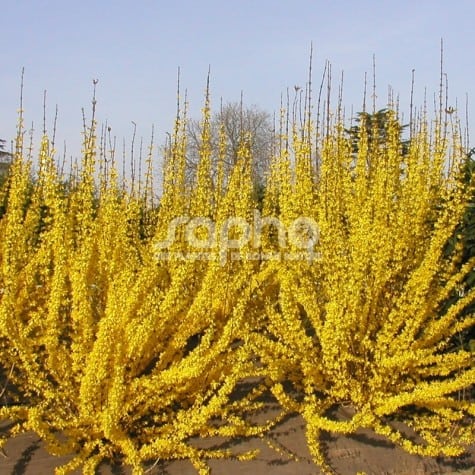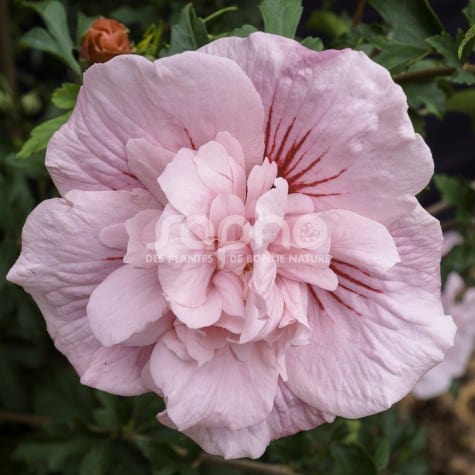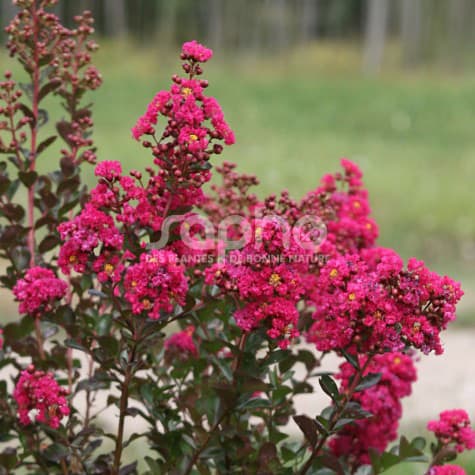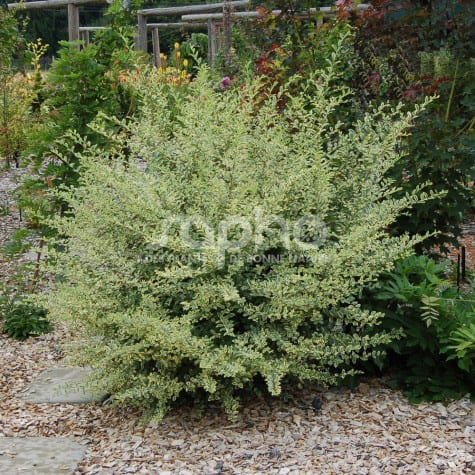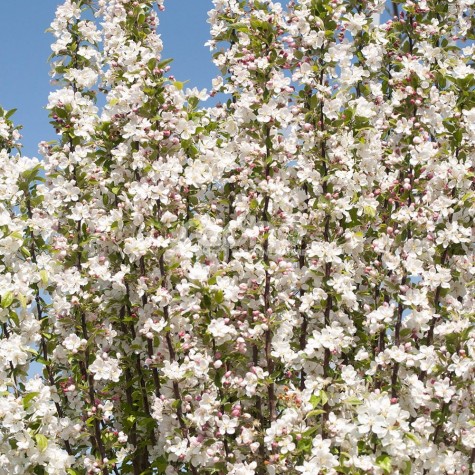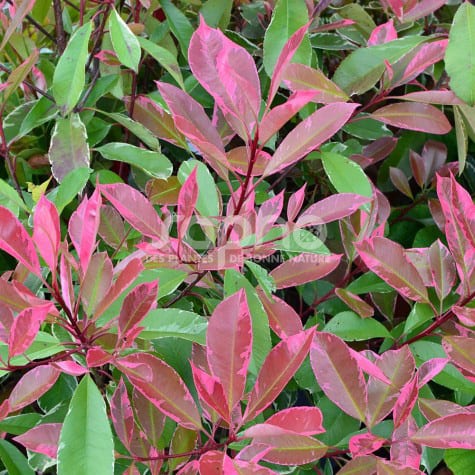Bright pink flowers for this Callistemon, more hardy than other classic varieties.Like all the 'bottle brushes', the flowers are grouped in a characteristic way like flower stalks at the end of the branches; the long stamens give the shrub its ornamental appeal.It is scarlet pink, a complimentary colour to the traditional varieties, the flowers bloom from the end of May and in June for a month and more discretely in the autumn if they are cut under the wilted flowers.The red coloured young shoots make room for fine narrow grey-green foliage, which can persist all winter. HOT PINK is hardier than other classic varieties.The shape of this Callistemon selection originating from South Africa is rounded and well ramified and grows up to to 2 meters in height in areas with favourable climate.
Filter By
Position
Where to find Sapho plants ?
For young plants
You will find the names of Sapho-licensed nurserymen at the bottom of each variety sheet.
For available plants
Please ask your nursery suppliers.
Each licensed propagator is free to market his young plants to all his customers.
Categories
Menu
Inspirations
A choisya with an unusual robust habit, large and abundant flowers gradually changing from pink to white
GREENFINGERS 'Lissfing' is an outstanding variety with an unusual dense habit and abundant flowers. The plant is well-structured with robust branches; the internodes, shorter than in other Choisya, give it a more compact silhouette, with denser foliage. In spring, its abundant, pleasantly fragrant flowers are particularly striking, combining candy pink buds with pure white open blooms. In good weather conditions, this variety can flower again in autumn. Its evergreen foliage has an attractive dark-green tinge. The flowers of GREENFINGERS 'Lissfing' are larger than those of traditional Choisya varieties. It is a hardy plant that can be grown in sun or part shade. Suitable for all fertile soils, it can reach 2 m x 2 m after five years.
This new variety is a hybrid between Choisya ternata and arizonica. GREENFINGERS 'LISSFING' is a result from the hybridisation work led by Peter Catt from Liss Forest Nursery. It is the newest addition to the range that already includes the outstanding varieties: Choisya SCENTED GEM 'LISSBRID' and Choisya GOLD STAR 'LISSTAR'
A miracle of colours, all year long !
This superb variety has bright, colorful variegated foliage, which falls in autumn and reveals its highly decorative red wood in winter.
The very pink, tricolored young shoots evolve to green with creamy white and pink margins. The pink variegation returns in autumn, turning crimson to garnet-pink (even more intense in colder climates).
It's a highly branched plant, which structures very well and looks great in pots.
A cultivation which will wake up beds and mixed hedgesGOLDEN LADY® 'MINCOJAU3' is a real improvement on the existing golden varieties. In spring it has beautiful young, bright orange shoots which progressively turn golden yellow. The foliage turns a yellow green in summer and is not affected by the sunlight. It becomes orange in the autumn.The cream - pink inflorescences appear in July.Being dense and branching naturally, this cultivation is easy to grow in containers.The bright and varied tints of the foliage are at their best when the shrub is grown in a bed or a mixed hedge.
MARIANNI®, a sure bet for the garden because of its bright lasting variegation and its intensely fragrant flowers.
The evergreen foliage of MARIANNI ®, our Daphne selection, is very widely edged in light yellow, more intensely than the traditional 'Aureomarginata' variety. The shrub attracts attention by the luminosity of its variegation, in contrast to its dark green tint.Its shape is rounded and bushy, its growth rate medium.In February-March bouquets of small very fragrant flowers, purple pink on the outside of the petals , light pink on the inside, appear at the end of the stems. The flowering period is long.
Trophies:
Silver Medal at PLANTARIUM 2008 (Boskoop - Netherlands)
An original colour and a very even growth for this new ElaeagnusThe foliage is widely variegated in a light yellow which gets stronger with the seasons. This shrub stands out from far away due to its luminosity. Its good ramification, its compact shape, its evenness, make it an excellent container plant and is easy to use in the garden. Reacting well to pruning, it can be used in a hedge. Like all the other Elaeagnus, the discrete, white and scented flowering takes place in autumn.Trophies: Bronze Medal at PLANTARIUM 2015 (Boskoop - Netherlands)
A touch of light in beds and mixed hedges ... highly appreciated by garden lovers for a long time!
WEEK-END® is interesting as it keeps its dense and branched shape, thus reducing the need for pruning to a minimum.Its abundant, golden yellow flowers start blossoming at the beginning of March, depending on the region (according to 'Lynwood').A 'must' in cultivation... and for a long time appreciated by garden lovers: a touch of sunshine in the garden from March onwards and for a flowering hedge. There is no need to cut back regularly thanks to its naturally dense and upright shape. WEEK-END® can also be planted in big tubs.
The charm of the CHIFFON range and pink flowers with a red heart
From July to September, LAVENDER CHIFFON has flowers with fine, lavendar coloured petals, the base of which are streaked with red. This selection is suitable as a single plant or in shrub borders and associates harmoniously with the other varieties of the CHIFFON range, a valued asset to the summer decor of any garden.
The fuchsia coloured lilac of the INDIYA CHARMS® rangeThe young red shoots make room for big shiny leaves, purple green to bronze, depending on the conditions. The early flowers bloom as very thick fuchsia coloured, nearly red thyrses.BRAISE D'ÉTÉ®, CAMAÏEU D'ÉTÉ®, FUCHSIA D'ÉTÉ® and VIOLET D'ÉTÉ® are the four varieties of the INDIYA CHARMS® range of our program. They offer pretty shades of mauve, violet, pink and red, adding bright summer colours to shrub borders and mixed hedges. Stem-grafted, in pots or in the ground, they decorate any entrance, terrace or, more traditionally, can be planted in a row.They can also be trained along a south facing wall.
Luminous shrub, MUSLI® is noticeable from a distance.MUSLI® was discovered and selected as a seedling of Ligustrum ibota in Switzerland.Leaves are opposite, evergreen to semi-evergreen and remarkable for their lasting variegation, highly resistant to the sun. The young shoots are light yellow, turning white with time. The foliage is more or less variegated, light grey-green with creamy white edges, sometimes so wide that they cover the entire width of the leaf.When young, the shrub is of bushy and spreading growth with arching branches. Then MUSLI® forms an even bush with a dense centre. It is of moderate growth.In early summer, the shrub will produce clusters of fragrant white tubular, nectar bearing flowers, turning into blue-black berries, which attract the birds.This shrub tolerates cutting back and is suitable in topiary, in a monospecific or a mixed hedge. Together with other shrubs or in a pot is is very remarkable by its particularoy bright foliage.Trophies: Bronze medal at PLANTARIUM 2011 (Boskoop - NETHERLANDS)
Naturally a STAR since its creation.
This tree is of semi-spreading growth, reaching a height of 3 to 4m in ten years and has a harmonious shape, which it keeps without the necessity of pruning. Its foliage is green.
In April, 'Evereste' covers itself in bright pink flower buds, which bloom as pure white bouquets of flowers. The quality and the abundance of its pollen make it an ideal pollinator, precious for fruit growers (in proportion of 6 - 8% of all varieties of early or semi-early flowering).
The cherry sized fruits are orange with thin red stripes. They apprear in autumn and have the particularity to last well into winter.
'Evereste' has also been chosen by the INRAE selectors for its resistance to the major diseases such as fire blight, scab and mildew.
Nearly a million plants have been sold in Europe since its creation in 1974.
Its ornamental qualities, its reasonable dimensions and its easy care make it an excellent small urban tree if grown full standard; in clumps it is very valuable in the composition of flowering hedges and in shrub borders.
Beautifully mixed colours and an upright and regular formIts variegated foliage brings colour throughout the year. Photinia Louise has also been selected for its vigorous, erect growth and its ample vegetation that's regular, compact and dense. Photinia Louise is a shrub with persistent leaves and changing colours. In spring and autumn the young shoots are bright red spotted with pink.The developing leaves become thick and green, spotted wih creamy white. Its flowers, in May, are quite discreet, forming creamy white umbels. Upkeep is easy as it needs little pruning other than that required by the garden. In a hedge, a mixed bed or as a solitary shrub, 2 to 3 m high, Photinia Louise will enliven a garden throughout the year.

